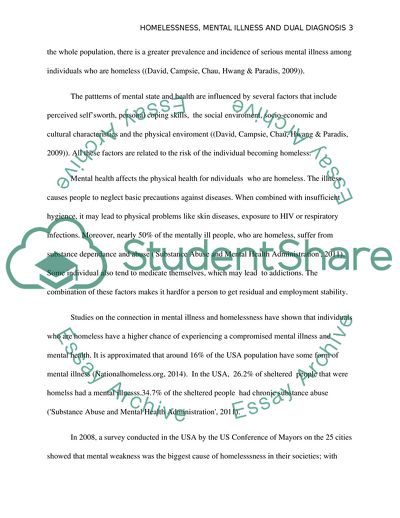Cite this document
(Mental Illness and dual diagnosis as predictors of homelessness Research Paper Example | Topics and Well Written Essays - 2750 words, n.d.)
Mental Illness and dual diagnosis as predictors of homelessness Research Paper Example | Topics and Well Written Essays - 2750 words. https://studentshare.org/sociology/1848360-mental-illness-and-dual-diagnosis-as-predictors-of-homelessness
Mental Illness and dual diagnosis as predictors of homelessness Research Paper Example | Topics and Well Written Essays - 2750 words. https://studentshare.org/sociology/1848360-mental-illness-and-dual-diagnosis-as-predictors-of-homelessness
(Mental Illness and Dual Diagnosis As Predictors of Homelessness Research Paper Example | Topics and Well Written Essays - 2750 Words)
Mental Illness and Dual Diagnosis As Predictors of Homelessness Research Paper Example | Topics and Well Written Essays - 2750 Words. https://studentshare.org/sociology/1848360-mental-illness-and-dual-diagnosis-as-predictors-of-homelessness.
Mental Illness and Dual Diagnosis As Predictors of Homelessness Research Paper Example | Topics and Well Written Essays - 2750 Words. https://studentshare.org/sociology/1848360-mental-illness-and-dual-diagnosis-as-predictors-of-homelessness.
“Mental Illness and Dual Diagnosis As Predictors of Homelessness Research Paper Example | Topics and Well Written Essays - 2750 Words”. https://studentshare.org/sociology/1848360-mental-illness-and-dual-diagnosis-as-predictors-of-homelessness.


